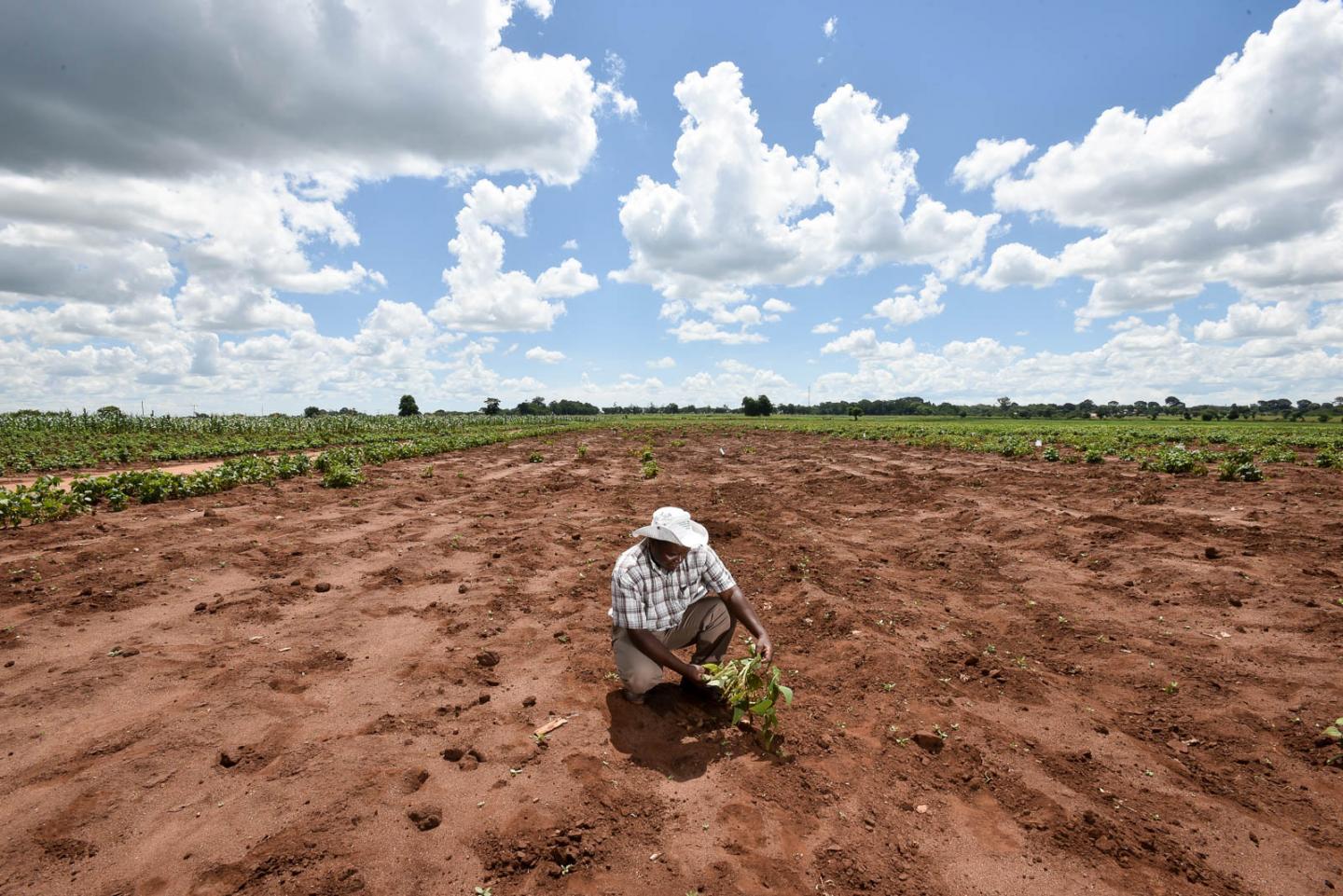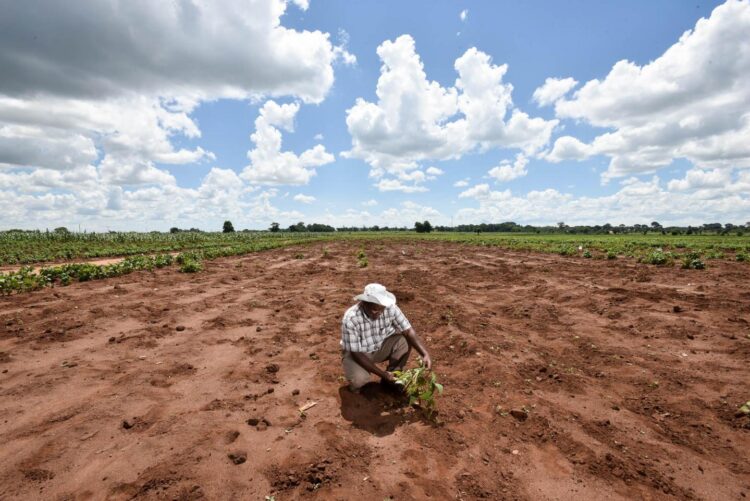When used appropriately, satellite data is rapidly expanding the potential to customize insurance for smallholder farmers, potentially increasing the resilience of marginalized rural communities

Credit: Neil Palmer/International Center for Tropical Agriculture
When drought caused devastating crop losses in Malawi in 2015-2016, farmers in the southeastern African nation did not initially fear for the worst: the government had purchased insurance for such a calamity. But millions of farmers remained unpaid for months because the insurer’s model failed to detect the extent of the losses, and a subsequent model audit moved slowly. Quicker payments would have greatly reduced the shockwaves that rippled across the landlocked country.
While the insurers fixed the issues resulting in that error, the incident remains a cautionary tale about the potential failures of agricultural index insurance, which seeks to help protect the livelihoods of millions of smallholder farmers across the globe. Recent advances in crop modeling and remote sensing – especially in the availability and use of high-resolution imagery from satellites that can pinpoint individual fields – is one tool insurers that can help improve the quality of index insurance for farmers, report a team of economists and earth system scientists this week in Nature Reviews Earth & Environment.
“The enthusiasm for agricultural insurance needs to be matched with an equally well-founded concern for making sure that novel insurance products perform and help, not hurt, farmers exposed to severe risk,” said Elinor Benami, the lead social scientist of the review.
The review was co-led by Benami, an assistant professor in Agricultural and Applied Economics from Virginia Tech, and Zhenong Jin, an assistant professor of Digital Agriculture at the University of Minnesota, and included Aniruddha Ghosh from the Alliance of Bioversity International and CIAT. The authors outline opportunities for enhancing the quality of index insurance programs to increase the value that index insurance programs offer to agricultural households and communities.
“Improvements in earth observation are enabling new approaches to assess agricultural losses, such as those resulting from adverse weather,” said Zhenong.
Index insurance in agriculture triggers payments when certain environmental conditions – seasonal rainfall, for example – stray from thresholds for a typical harvest. Unlike policies that require costly and time-consuming field visits to assess claims, index insurance uses an indicator of losses to cover a group of farmers within a given geographical area. This approach offers the promise of inexpensive, quick coverage to many people who would otherwise be uninsured.
Lack of other types of coverage is due, in part, to the cost involved in verifying small claims on the ground. As the Malawi case shows, verification is also an issue for index insurance but its potential for scale, speed, and low cost render it viable for both insurers and desirable for farmers. When well matched to local experiences, index insurance can have meaningful impacts on agricultural livelihoods. One study cited by the authors found that people insured under a Kenyan index insurance program reduced their “painful coping strategies” by 40-80% when compared to uninsured households.
In non-technical terms, “painful coping strategies” for smallholder households include skipping meals, removing children from school, and selling off what little productive assets they have.
“Shocks that destroy incomes and assets have been shown to have irreversible consequences,” said Michael Carter, a co-author of the review and an agricultural economist at the University of California, Davis. “Families never recover from the losses and become trapped in poverty. By restoring assets and income destroyed by shocks, insurance can halt this downward spiral before it starts. This can fundamentally alter the dynamics of poverty.”
Insurance has been shown to push the poverty needle in the other direction. By protecting assets after bad seasons, insurance payments also build the confidence farmers have to invest in their farms and progress toward better wellbeing, secure in the knowledge they will not need to pursue painful coping if bad times fall. Despite a few decades of experimentation with the idea of index insurance, however, serious quality issues have plagued implementation on the ground and place the otherwise promising concept of index insurance itself at risk.
“With the technology of remote sensing changing rapidly, we wrote this review to call attention to the quality problem and to highlight ways to harness those technological advances to solve that problem. Our immodest hope is that this article will make more, high-quality insurance products available to small-scale farmers across the globe,” said Carter.
Better models, coverage
Governments and insurers in sub-Saharan Africa have enrolled millions of farmers in index insurance programs. Programs have met with varying degrees of success and generally focus on livestock, in part because weather-related losses on rangelands are relatively easier to quantify. The authors say enhanced satellite imaging can potentially increase coverage and include more cropland. But improving the effectiveness of insurance is a bigger goal.
“We’re trying to encourage the insurance community to move towards not just how many people you have enrolled but how many people you protected well when they suffered,” said Benami.
To that end, the researchers discuss a minimum quality standard in their review, which is akin to a medical doctor’s oath to patients: A minimum quality standard is based on the premise of doing no harm to farmers. Poor insurance coverage can make farmers worse off than they otherwise would have been without insurance.
“The criteria that insurance regulators have told us that they want is good value for money – meaning that farmers get effective risk reduction and asset protection for the premia that are paid,” said Benami. “As we understand it, insurers are looking for ways to reduce cost and encourage uptake while meeting regulatory requirements for their roll-out.”
To improve the quality, reliability, affordability and accessibility of index insurance, the authors make five concrete recommendations in their study.
- First, the full potential of higher-resolution spatial data and new data products on environmental conditions should be explored. Many possibilities exist to wring more value from satellite data for index insurance – such as pairing data from multiple sensors and or with crop models – and examining those possibilities is a promising opportunity to improve the match between observation and experience on the ground.
- Second, several opportunities exist to help improve loss detection. For example, this can be done with better crop modeling and new data products enabled by remote sensing, such as higher resolution soil moisture indicators of 100-meter resolution. Additional data sources such as drones and smartphones can be incorporated. Insurers should focus on metrics of farmer welfare as the key objective in insurance design.
- Third, better on-the-ground data will help bolster the usefulness and quality of insurance programs. Ground-referenced data is essential to evaluate how well a given index relates to a farmer’s reality, and strategically collected data on environmental conditions, crop types, and yields for the areas considered by insurance would help diagnose and improve insurance quality.
- Fourth, insurance zones can be optimized to better reflect the geographic, microclimatic, and crop-management conditions that influence the productivity of specific landscapes. Within large administrative boundaries, considerable variation can occur due to mountains, rivers and different social customs.
- Finally, contracts can be designed to accommodate a variety of needs and the inevitability of index failure. Farmers have different needs and a rigid insurance contract window may not always reflect the times of the year a farmer is most concerned about risk as it relates to their production strategies and location. In addition, secondary mechanisms — liked audits — can be put into place to minimize uncompensated losses that can be missed by index errors.
In implementing these recommendations, the Alliance’s Ani Ghosh notes the importance of interdisciplinary, researcher-practitioner collaborations. For example, “the advances in economic, remote sensing, and crop modeling led by academic institutions complement CGIAR’s experience in targeting, prioritizing, and scaling out interventions for smallholder farmers that can maximize the impact of index insurance programs,” Ghosh said.
“Overall, evaluating and designing programs to successfully manage risk is a problem with both technical and social dimensions,” the authors conclude. “Although index insurance instruments will not solve all agricultural risk-related problems, they offer a useful form of protection against severe, community-wide shocks when done well.”
###
Media Contact
Sean Mattson
[email protected]
Related Journal Article
http://dx.





